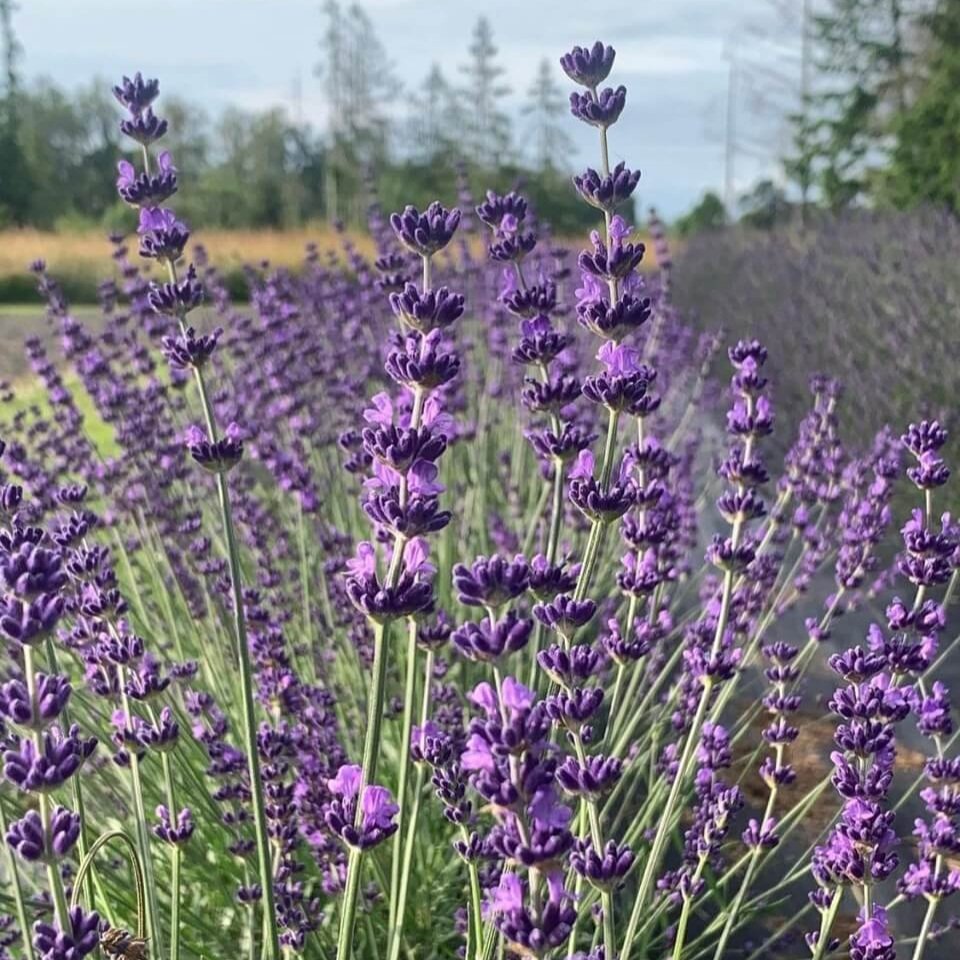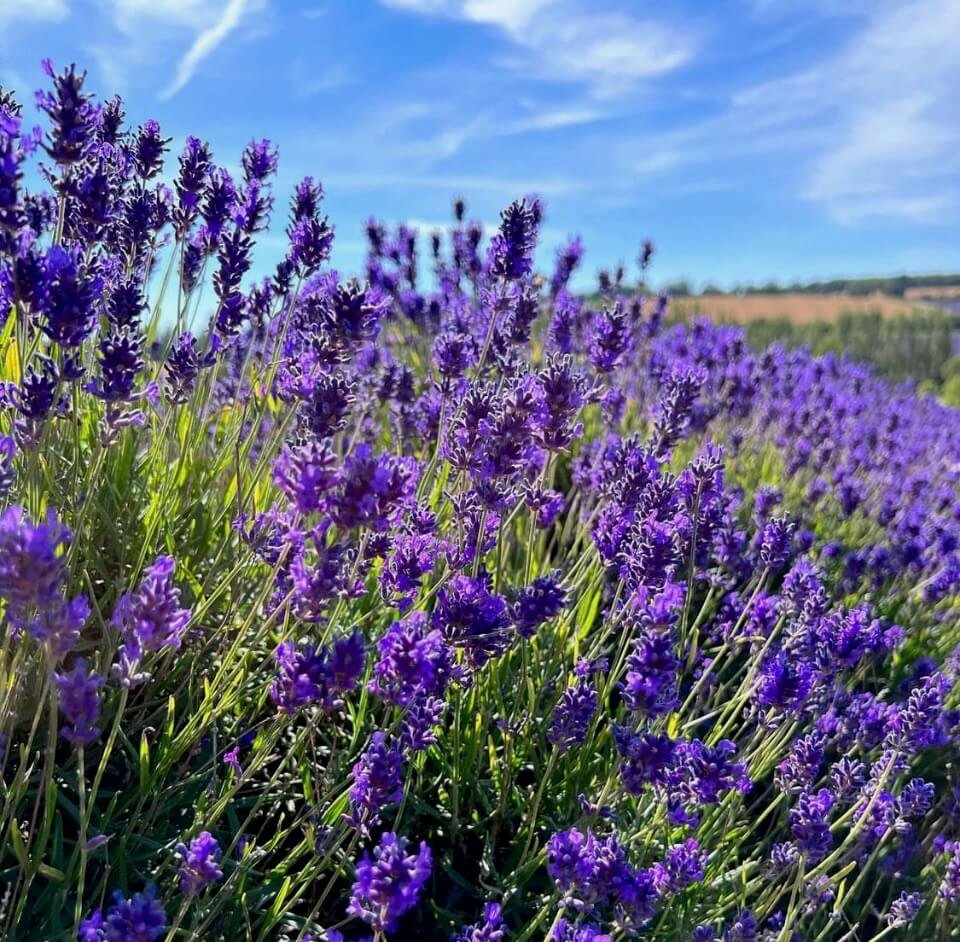How to Grow and Care For Lavender Plants
About Lavender
Lavender is famous for its long purplish blue flowers and healing aromas. Being a part of the Lamiaceae family, this plant would be a great addition to any indoor or outdoor garden space. Many use dried lavender to add sweetness and savoriness in many traditional meals. Lavender is known to have many healing benefits and may help alleviate symptoms of anxiety and depression. This step-by-step guide will walk you through growing lavender from seed to your stomach.
-
Lavandula
-
Great for Beginner Gardeners
-
14-21 days
-
Early spring
-
2-3 years
-
Toxic to Cats and Dogs
Sunlight Requirements
Lavender plants require around 6-8 hours of bright direct sunlight. If you are keeping your lavender plant outdoors, place your plant in an area that does not have a lot of shade. If you are growing lavender indoors, you will want to keep your plant close to a south facing window. It may be worth investing in a grow lamp to make sure that your plant is getting substantial amounts of light.
Temperature Needs
According to the USDA, lavender plants thrive best in zones 5-9 and in areas where temperatures are above 65°F. If you live in an area that experiences colder temperatures, it may be best to bring in your lavender plant for the colder months. Start the process a few weeks before the first frost by gradually moving your lavender plant indoors. Once indoors you should place your plant near a south facing window where there are no cold drafts.
Watering Requirements
One of the hardest tasks when taking care of lavender plants is fulfilling its watering requirements. Lavender needs to be watered when the top two inches of soil completely dry out. This type of plant is used to drier hot climates, so it's best to try and replicate its natural habitat as much as possible. You may be overwatering your plant if you see yellowing, drooping, unhealthy looking leaves and stems. If you run into an overwatering issue, safely remove the impacted leaves and adjust your watering style.
Best Soil for Lavender Plants
Lavender plants prefer a well draining soil composed of sand, perlite, and fine rock. The pH of the soil should be between 6.5 and 7.5. The proper soil is the foundation for success when growing any plant, especially lavender.
Recommended Lavender Varieties
There are around 45 species of Lavender in the Lamiaceae family. The following are our favorite types to grow within our own home garden.
Munstead Lavender
A type of English lavender, known for its floral and sweet flavors and aromas.
Royal Velvet Lavender
Has dark purple floral leaves with an intense essence and fragrances.
Hidcote Lavender
Very versatile, this type of lavender has very dark purple leaves and sweet tastes.
Folgate Lavender
A type of English lavender that attracts many pollinators and produces sweet aromas.
TOOLS REQUIRED:
Lavender Seeds,
Ziploc® Bag,
Paper Towels
Grow Light
Seed Tray with Dome
Peat Pellets / Potting Soil
Starting Lavender From Seed
Lavender is a challenging plant to begin from seed, but under the right conditions you will have thriving lavender in no time. Follow these easy steps when growing lavender plants in your indoor or outdoor garden. It may be best to begin the growing process indoors to have better control over your seedlings’ environment.
Follow these simple steps for starting your lavender plants from seed.Choose The Variety of Lavender to Grow: above we’ve listed four of our favorite types of lavender to grow in the garden. Generally, you get a choice between English, Spanish, or French lavender.
Prepare The Seeds: lavender seeds need to go through a cold stratification step. Many shubs, perennials, and trees need this step in order to germinate. The best way to stratify your seeds is by grabbing a plastic bag, a moist paper towel, and some lavender seeds. Dampen the paper towel and fold it in half. Gently place the lavender seeds on the moist towel and place in the plastic bag. Place in the fridge for 3-6 weeks before planting.
Prepare the Soil: grab your peat pellets or potting soil and fill your seedling tray. Moisten the soil and make holes 2 inches apart, ¼ inch deep.
Sow Your Seeds: plant 2-3 seeds in peat pellets or in each hole of the tray then gently cover with existing soil.
Place Your Seed Tray: put your seed tray under a grow lamp where you can better regulate temperature and sunlight. Never keep the seedling tray in an area that gets cold drafts.
Water The Seed Tray: water the tray until the soil is moist throughout. Do not confuse moist with wet, it is very easy to drown and shock your seeds. Cover with a seedling tray dome.
Wait & Watch: keep a close eye on your seedling tray over the next following weeks, never allow the soil to completely dry out. It may be 2-3 weeks until your seeds germinate, so be patient.
pink roses
Companions Plants of Lavender
There are many companion plants that will aid your lavender in growing happily and healthily. Some of these plants include, marigolds, roses, white sage, cone flowers, alliums, and African daisies. These companion plants will help keep away any unwanted predators, boost growth, and help enhance the overall flavors of your lavender plant.
marigolds
Re-potting Lavender Plants
The best time to change your lavender plant’s environment is in the late winter, so always check the time of year before re-potting. The plant needs time to grow new roots to prepare for a whole season of growth. Follow these easy steps when re-potting your lavender plant.
Follow these easy steps for transporting your baby lavender plants into its new home.Grab a New Pot: the new pot should have drainage holes, and be slightly bigger than your current pot size. For example, if you have a 4 inch pot, consider upgrading to a 6 inch pot. It’s better to allow your plant to fully grow into its new pot.
Mix New Soil: When repotting your plants you always want to get new nutrient filled soil. Place around 2 inches of soil in the bottom of the new pot.
Take the Lavender Plant Out of its Original Container: flip the plant upside down and gently remove it from the pot. Observe the roots of the plant and make sure that they still look happy and healthy. Place the plant in the new pot.
Fill the Gaps: fill the areas that are missing soil with the mix that you made before. Never pack the soil down and keep the soil aerated.
Water the Plant: after any major change, plants need to be rewatered to prevent stunted growth and unwanted health issues.
Repeat the Process: your lavender plant will be ready to be repotted into a slightly bigger pot every 1-2 years
Harvesting
First, identify if your lavender plant is ready to be harvested. It may be too early to harvest if less than 50% of the plant is without flowers. If you have substantial flower growth, it's best to start harvesting in the early mornings of Spring. Snip 3 inches above the soil of your stems when making your cuts allowing for future growth. Always use sanitized shears when harvesting to avoid any unwanted fungal growth or viral/bacterial diseases. If you want to keep your lavender fresh, place the bases of the stems in water until you are ready to use them. Jump to the next section if you are turning your lavender plants into dried seasoning.
Turning Lavender Into Dried Seasoning
A few options are available when drying out lavender plants. The two we will be walking through are the air drying method and the food dehydrator method.
-
Grab some twine, a clothes line and some lavender you harvested earlier. Tie together 6-8 lavender stems into bunches and hang them upside down on the clothesline. This process will take a couple of weeks. When completely dry use your fingers to get the dried lavender flowers off of the stems and place them into airtight mason jar. Store in a cold dark place.
-
Grab your food dehydrator and spread the stems on the sheet tray. Place it on the lowest setting and check every hour until the stems and flowers are completely dry. When dry, use your fingers to gently get the lavender off of the stems. Place in airtight mason jars and store in a cold dark place.
Susceptible Diseases
Lavender plants are susceptible to many pests and diseases, some of which include the following:
Crown Rot
Alfalfa Mosaic Virus
Xylella
Shab
Septoria Leaf Spot
Spittlebugs
Four-lined Plant Bugs
Frequently Asked Question’s
-
According to the ASPCA, lavender is toxic to cats and dogs. If consumption occurs it may cause stomach irritation. Contact your medical provider or visit the ASPCA website for more information.
-
Some claim that the aromas of lavender are known to soothe the mind & body. This includes alleviating anxiety and depression symptoms.
If you or any other person has a medical concern, you should consult with your health care provider or seek other professional medical treatment immediately. -
Yes, once your lavender plant reaches maturity, it's best to keep it well maintained. Out of control lavender is not something you want to be dealing with. Pruning promotes healthy growth in the future and prevents the development of unwanted diseases.
-
It is possible for lavender to bloom within the first year, but it will take up to three years. Under ideal conditions, it’s best to prune your lavender plants to promote healthy growth.









